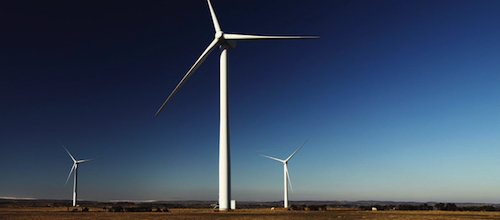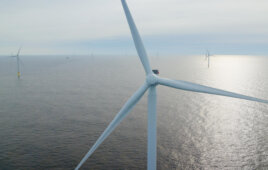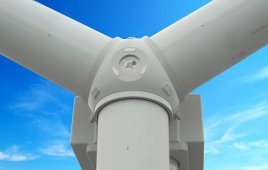Community wind refers to 100-kW to 100-MW projects owned in part by local community members, often land owners of the site. Though community wind represents only 4% of the overall wind market, it’s the fastest growing segment of the industry. The community-wind development model has several benefits over traditional absentee-owned mega farms.
Landowners often have a stake in the community-wind project, so they reap a higher return than in larger farms. The project also positively impacts the local economy through job creation, and the utility gains community good will. Also, zoning and permitting is often easier and faster when the application is submitted for a project that directly benefits the community—and when the community rallies behind it—than for one driven by outside developers and investors. Furthermore, the cost of transmission and connection to the grid can be much lower because projects can be closer to the cities they support, and require lower voltage lines with fewer upgrade costs to deliver power. To realize benefits, local partners must invest some capital, time, and effort, particularly in early stages. Most initial planning work must occur locally. Often there’s a steep learning curve at this point, because few laypeople have the specialized knowledge to determine if a project is viable.
The tricky part for any new wind entrepreneur is identifying a suitable location. Many factors will rule out a site altogether. One must consider environmental aspects, such as wetlands, bird-migration patterns, and protected animal habitats, as well as aircraft-flight patterns. Also, along with state and federal permits and regulations, local restrictions and ordinances mandate how close a turbine may sit to residential areas.
Once a site is identified, several factors help determine its economic viability, wind availability being foremost. While different turbines have different capacities, the total power the farm can be expected to produce depends on the expected average wind speed. The most efficient farms have an average wind speed of 15 mph or more, though that figure can fluctuate in relation to power cost in any given state. Next, assess the cost of turning the wind into electricity on the grid. This includes everything from purchasing and erecting the turbines, to grid connection, and cost offsets such as state and federal grants and tax credits. The final factor to consider is the local market price for energy. A wind farm is considered a viable project if it can produce enough energy so that, at market price, it will provide a reasonable rate of return to its investors.
After a site is found environmentally and economically viable, and adheres to all regulations, most initial work can be done from a desk. High-resolution maps, wind-resource maps, and overlays with information on transmission lines, protected areas, and even air patterns are available in digital format, on the internet, and through private companies. Acquiring this data is much quicker and easier than in the early days of wind farms, when a developer had to drive a truck over miles of windblown prairie.
Next, to measure the wind, a carefully positioned meteorological (MET) tower with wind gauges at various heights will record actual wind speeds and direction for six months to a year. Based on this data, a specialist can estimate the long-term average wind speeds at turbine height for each location. This determination, along with turbine specifications, helps a developer arrive at the farm’s total expected energy. Losses must be factored in, such as maintenance down time and “tower shading,” where one turbine blocks wind from another. Total expected energy is used to determine the expected financial return, and therefore the site’s potential viability. Then developers can focus on gaining permits, signing a Power Purchase Agreement with the local utility, and securing financing. Finally, construction can begin. While work can be accomplished relatively quickly in comparison with the project prep, wind-farm construction and connection is a complex task. In most cases, a special wind-development group will partner with local landowners to achieve the best results in the given conditions.
Community-wind projects make sense in many places throughout the country, but getting expert help to assess a site and partner in completing specialized tasks will help expedite the process and ensure getting a project across the finish line.
WPE
Filed Under: Community wind, Construction, Projects







Hi Faye – if you are looking at residential wind a great resource for information is http://www.windustry.org and the American Wind Energy Association http://www.awea.org
I have been interested in green energy for a long time and have been considering trying to use an alternative source for my home. Do you know of any place to get started with this?